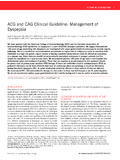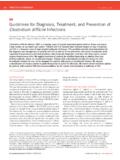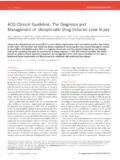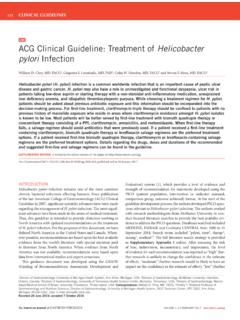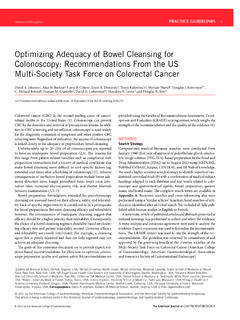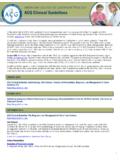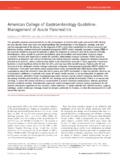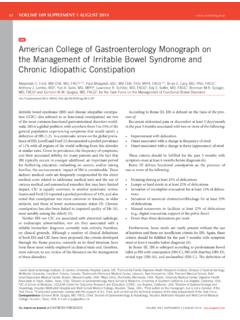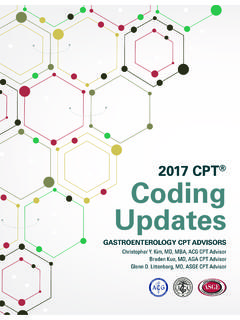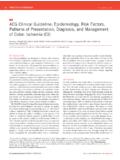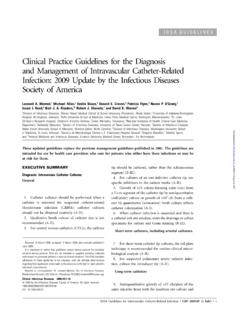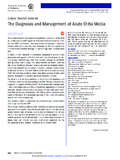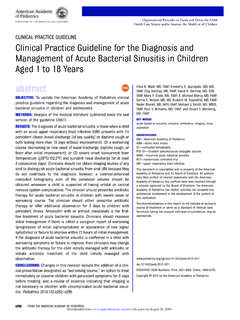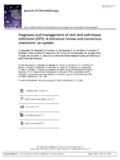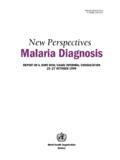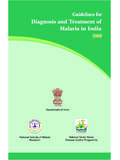Transcription of Guidelines for the Diagnosis and Management of ...
1 1672 ERRATA, CORRIGENDA AND RETRACTIONS nature publishing group Corrigendum: Diagnostic Testing in Extraesophageal GERD: Another Case of Furor Medicus ? Brennan Spiegel Am J Gastroenterol 2013; 108:912 914; In the Conflict of Interest section, the information under Financial support was incorrect. No funding was received from Shire. Corrigendum: Guidelines for the Diagnosis and Management of Gastroesophageal Reflux Disease Philip O. Katz, Lauren B. Gerson and Marcelo F. Vela Am J Gastroenterol 2013; 108:308 328; 1. On page 317, in the fifth paragraph of the Summary of the Evidence section, it is stated that certain endoscopic therapies, including radiofrequency augmentation to the lower esophageal sphincter, were removed from the US market. However, radio- frequency therapy was returned to the US market in 2010 and remains available. In stating that the therapy had been removed from the marketplace, the authors of the Guidelines neither implied nor intended to imply that there was any health, efficacy, or safety reasons for the removal.
2 2. On page 316, recommendation 6 under Surgical Options for GERD correctly notes that current endoscopic therapies cannot be recommended as an alternative to medical or traditional surgical therapy, and this was described as a conditional recommendation with a moderate level of evidence. However, recommendation 6 in the summary table on page 309, under Surgical Options for GERD, erroneously described the recommendation as strong.. The American Journal of GASTROENTEROLOGY VOLUME 108 | OCTOBER 2013 308 PRACTICE Guidelines nature publishing group see related editorial on page x CME. Guidelines for the Diagnosis and Management of Gastroesophageal Reflux Disease Philip O. Katz, MD1, Lauren B. Gerson, MD, MSc2 and Marcelo F. Vela, MD, MSCR3. Am J Gastroenterol 2013; 108:308 328; ; published online 19 February 2013. Gastroesophageal reflux disease (GERD) is arguably the most (further research would be expected to have an important impact common disease encountered by the gastroenterologist.)
3 It is on the confidence in the estimate of the effect and would be likely equally likely that the primary care providers will find that com- to change the estimate). The strength of a recommendation was plaints related to reflux disease constitute a large proportion of graded as strong when the desirable effects of an intervention their practice. The following guideline will provide an overview clearly outweigh the undesirable effects and as conditional when of GERD and its presentation, and recommendations for the there is uncertainty about the trade-offs. approach to Diagnosis and Management of this common and It is important to be aware that GERD is defined by consensus important disease. and as such is a disease comprising symptoms, end-organ effects The document will review the presentations of any risk factors and complications related to the reflux of gastric contents into for GERD, the diagnostic modalities and their recommendation the esophagus, oral cavity, and/or the lung.
4 Taking into account for use and recommendations for medical, surgical and endo- the multiple consensus definitions previously published (3 5), scopic Management including comparative effectiveness of differ- the authors have used the following working definition to define ent treatments. Extraesophageal symptoms and complications will the disease: GERD should be defined as symptoms or compli- be addressed as will the evaluation and Management of refrac- cations resulting from the reflux of gastric contents into the tory GERD. The document will conclude with the potential risks esophagus or beyond, into the oral cavity (including larynx). and side effects of the main treatments for GERD and their impli- or lung. GERD can be further classified as the presence of cations for patient Management . symptoms without erosions on endoscopic examination (non- Each section of the document will present the key recommen- erosive disease or NERD) or GERD symptoms with erosions dations related to the section topic and a subsequent summary present (ERD).
5 Of the evidence supporting those recommendations. An overall summary of the key recommendations is presented in Table 1. A search of OVID Medline, Pubmed and ISI Web of Science was SYMPTOMS AND EPIDEMIOLOGY. conducted for the years from 1960 2011 using the following major Epidemiologic estimates of the prevalence of GERD are based pri- search terms and subheadings including heartburn , acid regur- marily on the typical symptoms of heartburn and regurgitation. A. gitation , GERD , lifestyle interventions , proton pump inhibitor systematic review found the prevalence of GERD to be 10 20% of (PPI) , endoscopic surgery, extraesophageal symptoms, Nissen the Western world with a lower prevalence in Asia (6). Clinically fundoplication, and GERD complications. We used systematic troublesome heartburn is seen in about 6% of the population (7). reviews and meta-analyses for each topic when available followed Regurgitation was reported in 16% in the systematic review noted by a review of clinical trials.
6 Above. Chest pain may be a symptom of GERD, even the pre- The GRADE system was used to evaluate the strength of the senting symptom (2,3). Distinguishing cardiac from non-cardiac recommendations and the overall level of evidence (1,2). The level chest pain is required before considering GERD as a cause of chest of evidence could range from high (implying that further research pain. Although the symptom of dysphagia can be associated with was unlikely to change the authors' confidence in the estimate of uncomplicated GERD, its presence warrants investigation for a the effect) to moderate (further research would be likely to have potential complication including an underlying motility disorder, an impact on the confidence in the estimate of effect) or low stricture, ring, or malignancy (8). Chronic cough, asthma, chronic 1. Division of Gastroenterology, Einstein Medical Center, Philadelphia, Pennsylvania, USA; 2 Division of Gastroenterology and Hepatology, Stanford University School of Medicine, Stanford, California, USA; 3 Division of Gastroenterology, Baylor College of Medicine & Michael E.
7 DeBakey VA Medical Center, Houston, Texas, USA. Correspondence: Lauren B. Gerson, MD, MSc, Division of Gastroenterology and Hepatology, Stanford University School of Medicine, 450 Broadway Street, 4th Floor Pavilion C, MC: 6341, Redwood City, California 94063, USA. E-mail: Received 22 May 2012; accepted 10 December 2012. The American Journal of GASTROENTEROLOGY VOLUME 108 | MARCH 2013 Guidelines for the Diagnosis and Management of GERD 309. Table 1. Summary and strength of recommendations Establishing the Diagnosis of Gastroesophageal Reflux Disease (GERD). 1. A presumptive Diagnosis of GERD can be established in the setting of typical symptoms of heartburn and regurgitation. Empiric medical therapy with a proton pump inhibitor (PPI) is recommended in this setting. (Strong recommendation, moderate level of evidence). 2. Patients with non-cardiac chest pain suspected due to GERD should have diagnostic evaluation before institution of therapy.
8 (Conditional recommendation, moderate level of evidence). A cardiac cause should be excluded in patients with chest pain before the commencement of a gastrointestinal evaluation (Strong recommendation, low level of evidence). 3. Barium radiographs should not be performed to diagnose GERD (Strong recommendation, high level of evidence). 4. Upper endoscopy is not required in the presence of typical GERD symptoms. Endoscopy is recommended in the presence of alarm symptoms and for screening of patients at high risk for complications. Repeat endoscopy is not indicated in patients without Barrett's esophagus in the absence of new symptoms. (Strong recom- mendation, moderate level of evidence). 5. Routine biopsies from the distal esophagus are not recommended specifically to diagnose GERD. (Strong recommendation, moderate level of evidence). 6. Esophageal manometry is recommended for preoperative evaluation, but has no role in the Diagnosis of GERD.
9 (Strong recommendation, low level of evidence). 7. Ambulatory esophageal reflux monitoring is indicated before consideration of endoscopic or surgical therapy in patients with non-erosive disease, as part of the evaluation of patients refractory to PPI therapy, and in situations when the Diagnosis of GERD is in question. (Strong recommendation, low level of evidence). Ambulatory reflux monitoring is the only test that can assess reflux symptom association (strong recommendation, low level of evidence). 8. Ambulatory reflux monitoring is not required in the presence of short or long-segment Barrett's esophagus to establish a Diagnosis of GERD. (Strong recommendation, moderate level of evidence). 9. Screening for Helicobacter pylori infection is not recommended in GERD patients. Treatment of H. pylori infection is not routinely required as part of antireflux therapy. (Strong recommendation, low level of evidence).
10 Management of GERD. 1. Weight loss is recommended for GERD patients who are overweight or have had recent weight gain. (Conditional recommendation, moderate level of evidence). 2. Head of bed elevation and avoidance of meals 2 3 h before bedtime should be recommended for patients with nocturnal GERD. (Conditional recommendation, low level of evidence). 3. Routine global elimination of food that can trigger reflux (including chocolate, caffeine, alcohol, acidic and/or spicy foods) is not recommended in the treatment of GERD. (Conditional recommendation, low level of evidence). 4. An 8-week course of PPIs is the therapy of choice for symptom relief and healing of erosive esophagitis. There are no major differences in efficacy between the different PPIs. (Strong recommendation, high level of evidence). 5. Traditional delayed release PPIs should be administered 30 60 min before meal for maximal pH control.
